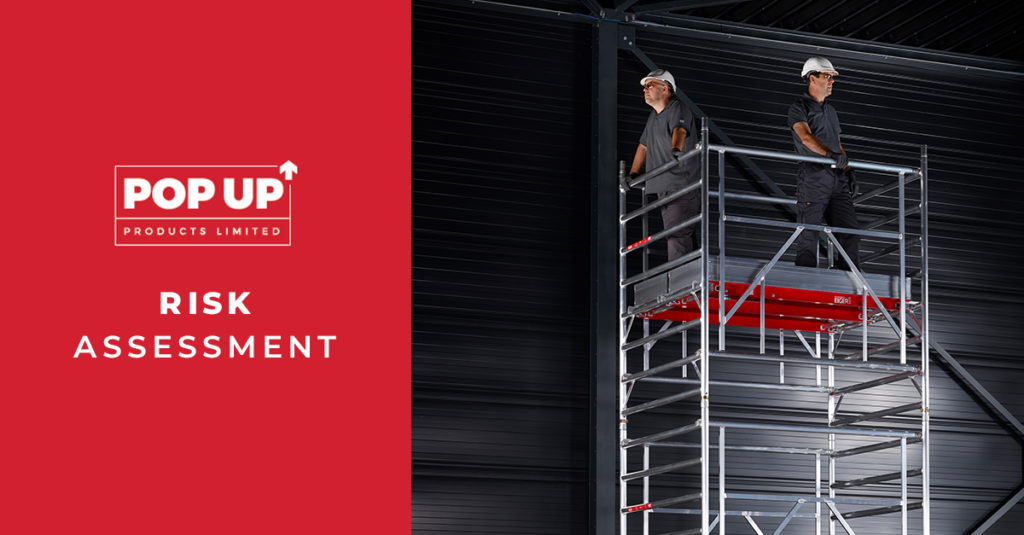- News & Articles
-
Products
Product Ranges
Product Categories
- Hire
- Buy
- About
- Resources
- After Sales Service
- Make an Enquiry

Safety is a key consideration when you’re working at height. As such, a risk assessment should always be performed before you build or operate an access tower.
In addition to the information provided below, we would like to draw attention to the fact that whilst we wouldn’t necessarily include it in a risk assessment, we also recommend that you stipulate that standard PPE must always be used to reduce risk further.
The format of a risk assessment is simple, straightforward and logical. It is a set of criteria that must be analysed
to ensure that you are able to work safely on your access tower. Examples of elements that could be included and considered are:
In addition to analysing the elements above, we’d also encourage you to consider the phases in which a risk assessment might apply. For example:
Phase 1 – Erection of access tower
Phase 2 – Working on access tower
Phase 3 – When returning to an unattended access tower
Phase 4 – Dismantling access tower
By applying all of the risk assessment elements to each phase of work, you’re ensuring that you cover every eventuality in a well structured manner.
Whilst each individual or company will approach risk assessments slightly differently, the standard format of a risk assessment is a simple table.
In these tables, the elements that we described with regard to the risks themselves would be used as column headings, and each row would contain a single consideration. There are tools that can be used to create your own risk assessment, but these will obviously come at a cost.
For that reason, we’d recommend that you begin by creating your own risk assessments using a simple table. If you find that it doesn’t work for you then, by all means, pursue a more sophisticated solution.